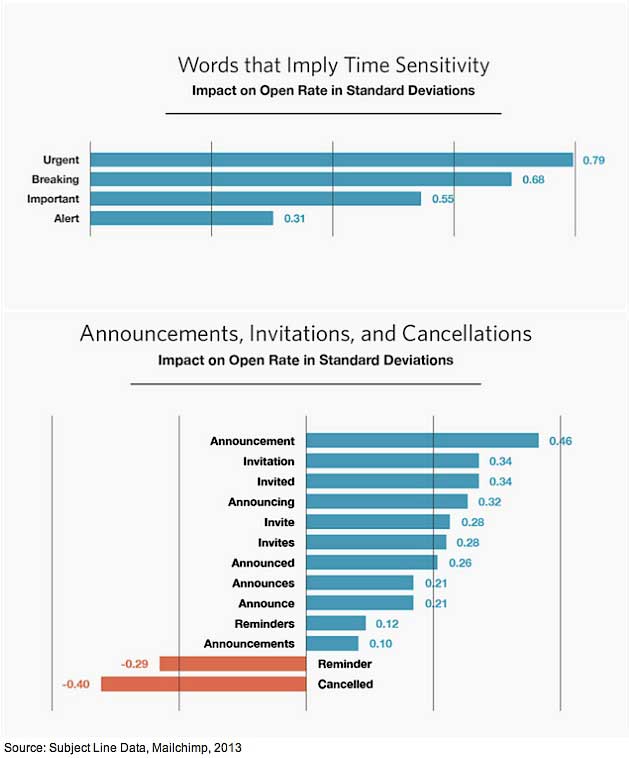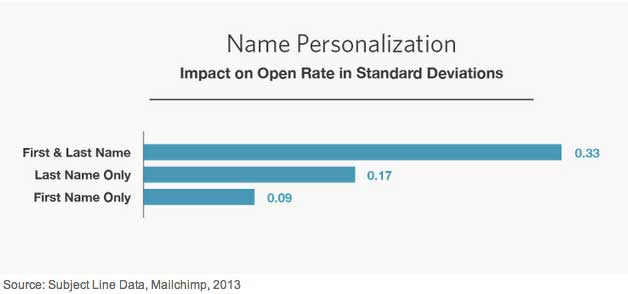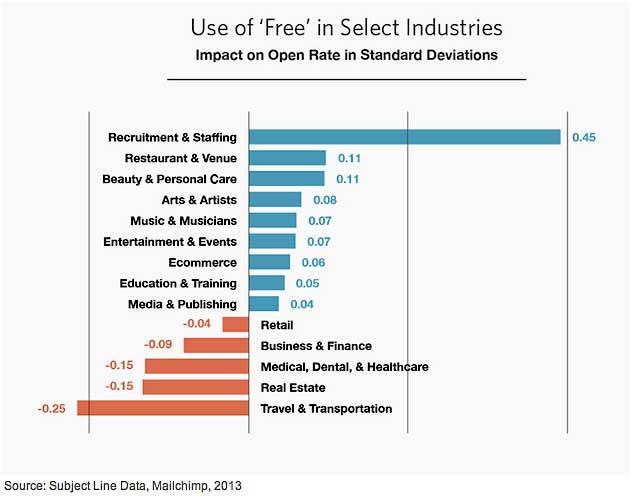Email subject lines that convey a sense of urgency, such as those that contain the words "urgent" and/or "important," have open rates that are much higher than normal, according to a recent report by MailChimp.
The analysis also found that email recipients are much more intrigued by subject lines that contain positive solicitations rather than negative admonitions: Words such as "announcement" and "invitation" have significantly higher open rates than those containing "reminder" and "cancelled."

Below, additional key findings from the report, which was based on data from 24 billion delivered emails.
Personalization
- Name personalization (e.g., including the recipient's first or last name, or both, in the subject line) generally leads to higher open rates.
- The most common practice, using only the recipient's first name, leads to a small but noticeable boost in open rates on average.
- That effect varies by industry: The use of first names in subject lines has a large positive impact when used in government, creative services, and political emails; however, first-name personalization has a negative impact on open rates for the legal industry.
- Though the inclusion of both first and last names in subject lines is less common, it has the largest overall positive impact on open rates.

Free
- The use of "free" in subject lines doesn't have a large impact on open rates overall (.02 deviation).
- However, the impact of "free" varies widely by industry. For the recruiting, restaurant, and entertainment industries, it boosts open rates significantly, whereas its use actually hurts open rates for the medical, retail, and travel industries.

Capitalization
MailChimp found the use of an entirely capitalized subject line results in a slightly higher open rate compared with other campaigns sent by the same user/list.

About the research: The report was based on data from 24 billion delivered emails with subject lines composed of approximately 22,000 distinct words. Only MailChimp campaigns sent by users from the United States to 500 or more recipients were included in the dataset.




